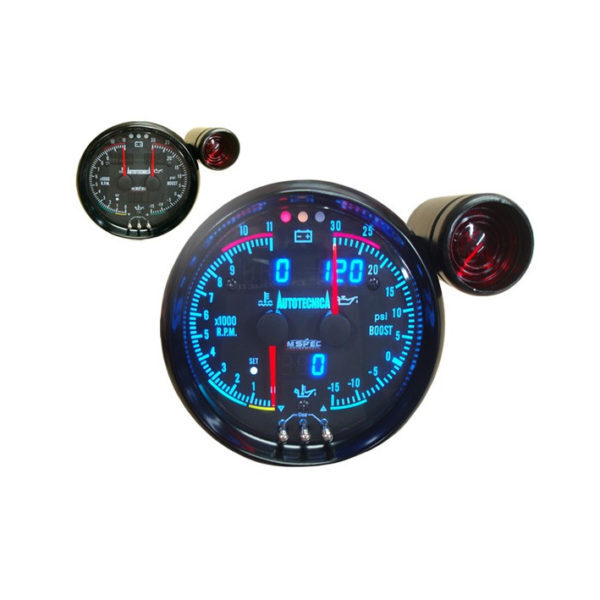How a Tachometer Assists Monitor Engine Health And Wellness and Performance
How a Tachometer Assists Monitor Engine Health And Wellness and Performance
Blog Article
Checking Out the Features and Advantages of a Tachometer: A Comprehensive Overview for Car Enthusiasts
In the realm of automobile instrumentation, the tachometer stands as a vital tool that offers motorists important understandings right into their lorry's performance. tachometer. From supplying real-time data on engine rate to assisting in optimizing gear changes, the tachometer functions as greater than simply a dial on the control panel. Its diverse features not only improve driving experience however additionally play a critical role in keeping engine wellness and efficiency. As we dig right into the intricate workings and benefits of a tachometer, a deeper understanding of its relevance for car lovers and professionals alike will unfold.
Understanding the Fundamentals of a Tachometer
In the realm of auto instrumentation, understanding the fundamentals of a tachometer is crucial for any auto enthusiast seeking to look into the complexities of engine efficiency tracking. A tachometer, frequently displayed on the control panel of a car, measures the engine's changes per minute (RPM) This critical instrument provides real-time information on exactly how fast the engine crankshaft is revolving. By keeping an eye on the RPM, vehicle drivers can guarantee they are running within the optimal array to make the most of efficiency and efficiency.
Tachometers typically have a scale marked in changes per min, with a redline showing the optimum rate at which the engine can securely operate (tachometer). This info is vital for protecting against engine damage and optimizing equipment moving for hand-operated transmissions. Additionally, tachometers can assist in diagnosing engine issues such as misfires or a falling short ignition system by discovering uneven RPM readings
Value of Keeping An Eye On Engine Speed

Keeping an eye on engine rate is a crucial element of automobile upkeep and efficiency optimization for vehicle fanatics and professionals alike. The engine speed, gauged in transformations per min (RPM), shows how quickly the engine's crankshaft is turning. By maintaining a close eye on the RPM, vehicle drivers can ensure that the engine is operating within the optimum array, preventing potential damages from over-revving or delaying. Keeping track of engine speed is specifically crucial during equipment changes, as it helps drivers identify the ideal time to alter gears for smooth velocity and effective fuel intake.
Furthermore, tracking engine rate can likewise supply beneficial insights right into the general health of the automobile. Generally, checking engine speed with a tachometer is an essential method that can boost driving performance, extend engine life, and make sure a more secure and extra satisfying driving experience.
Enhancing Performance With Equipment Shifts
Correct gear moving ensures that the engine operates within its optimal power band, enabling for smooth velocity and improved gas economic climate. When changing equipments, it is crucial to pay attention to continue reading this the engine speed indicated on the tachometer.

To attain peak efficiency with equipment changes, drivers should exercise smooth and prompt changes between gears, matching engine rate with road speed to harness the complete potential of their car's powertrain.
Taking Full Advantage Of Performance With a Tachometer
Understanding the art of gear shifting in high-performance cars not just improves driving experience however additionally plays an important function in maximizing efficiency with a tachometer. tachometer. By paying close interest to the tachometer analyses, chauffeurs can enhance their gear shifts to run within the engine's most efficient array. When speeding up, shifting gears at the appropriate RPM shown by the tachometer can stop the engine from straining or underperforming, leading to improved fuel performance and total performance
Additionally, a tachometer assists drivers avoid unnecessary revving, which not only throws away gas yet additionally puts unneeded stress on the engine. Consistently keeping an eye on the tachometer while driving permits smoother equipment changes, lowering damage on the transmission system gradually.

Advanced Tips for Tachometer Application
To dig into sophisticated ideas for tachometer use, take into consideration integrating the usage of change lights. Shift lights are visual indications that illuminate when it's time to change gears based on engine changes per minute (RPM), enabling for seamless gear modifications without frequently monitoring the tachometer. By fine-tuning change factors and establishing advising limits, drivers can optimize velocity and engine efficiency while minimizing the danger of over-revving.
Conclusion
Finally, the tachometer works as a vital device for vehicle fanatics to monitor engine speed, boost performance via equipment changes, and maximize efficiency. By More Help comprehending the features and benefits of a tachometer, drivers can optimize their driving experience and extend the life expectancy of their car. Utilizing advanced tips for tachometer use can further boost driving abilities and overall efficiency when driving.
Report this page